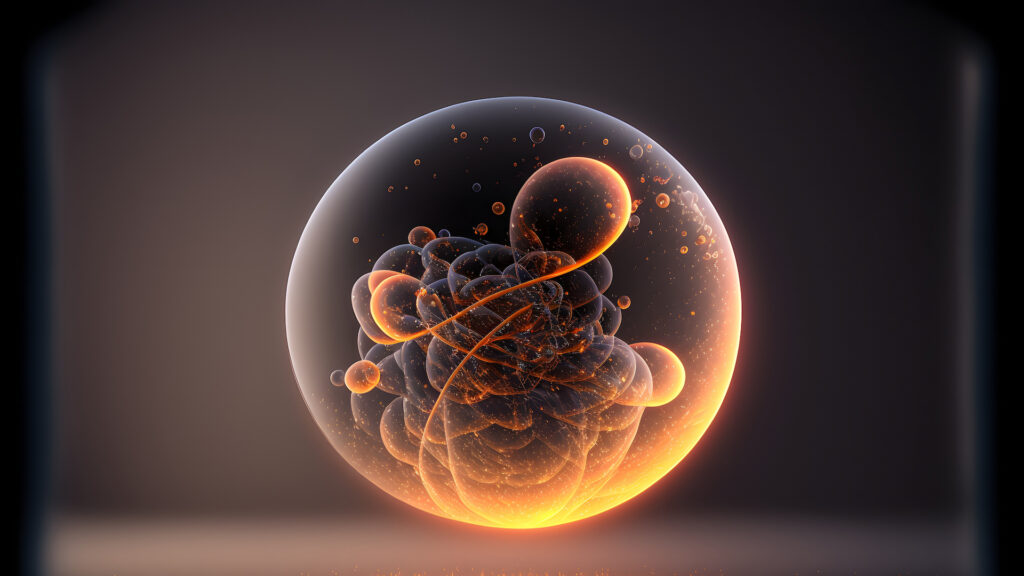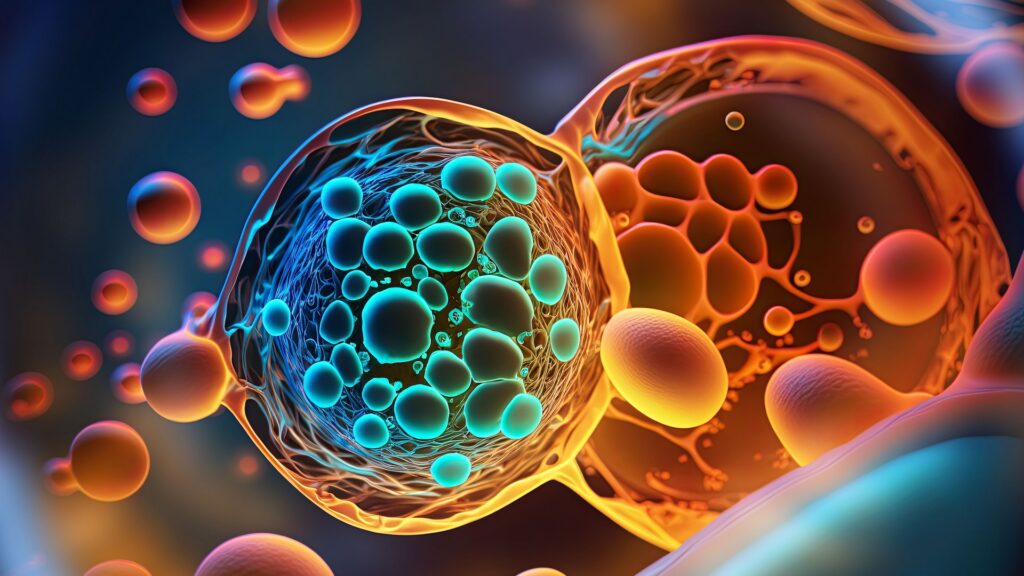In the ceaseless march of time, the wheel of innovation continues its relentless turn, forever gaining momentum and steering humanity toward new horizons. With each dawn, we uncover revelations that not only redefine our understanding of the universe but also reshape the very fabric of our daily lives. From the awe-inspiring expanses of space exploration that allow us to reach out and caress the stars, to the intricate dance of neutrinos powering our future, these pioneering discoveries kindle the flames of imagination and challenge us to dare beyond the known. Every breakthrough, every leap forward, serves as a clarion call, beckoning innovators, thinkers, and dreamers from all corners to push past perceived boundaries, and chart courses into uncharted territories of possibility.
The Dawn of Galactic Discovery

Ever yearned for a profound reminder of the universe’s immeasurable expanse? Behold the maiden images captured by the James Webb Space Telescope – a spectacle of awe and wonder. This paragon of technological marvel, the most sophisticated telescope to grace our age, promises insights that will chart the course for interstellar voyages for epochs to come. Notably, the recent celestial odyssey under NASA’s Artemis Program, destined for the moon, serves as a precursor to mankind’s dream of setting foot on Mars. As we stand on the cusp of this revolutionary epoch in cosmic exploration, we will witness ripple effects, igniting advancements not just in the realm of astronautics but also echoing into domains such as material science, gastronomy, agronomy, and even the art of cosmetics.
A significant advance in AI forecasts

For many an age, scholars and researchers have sought a profound grasp of the intricate dance between protein functionalities and their three-dimensional tapestries. In the warm embrace of July 2022, Deep Mind unveiled a revelation: the complex 3D tapestry of a protein can be divined from its linear amino-acid soliloquy, courtesy of the prodigious algorithms AlphaFold2, RoseTTAFold, and trRosettaX-Single. This monumental achievement dwindled the enigma of proteins shrouded in mystery from a staggering 4,800 to a mere 29. Although the realm of AI is never devoid of hurdles, this newfound prowess in protein prognostication promises ripples of change across the vast sea of life sciences. The horizons yet to be conquered entail the modeling of capricious proteins, those that dance to the tunes of post-translational modifications, or sway to the whims of their environment. As we venture forth, AI’s relentless march promises to revolutionize paradigms and unfurl realms of possibilities across myriad fields and disciplines.
Evolving Horizons in Synthetic Biology

The realm of synthetic biology holds the promise of reshaping the way we think about biological pathways. By harnessing the power of tailor-made biological systems—think microorganisms with intricately designed or modified genomes—we stand on the brink of synthesizing a diverse array of biomolecules and materials. Imagine a world where insulin is harvested not from pig pancreases, but engineered entities; where the luxury of leather doesn’t necessitate a cow; where the finesse of spider silk is achieved sans the spider. The possibilities within the life sciences sphere are staggering in their vastness. Yet, its magic, when channeled into the manufacturing sector, might be the panacea for looming supply chain predicaments, driving efficiency, and unveiling a new era of sustainable biopolymers and innovative materials. At present, collaborations utilize AI-fueled metabolic blueprints, the precision of CRISPR mechanisms, and artfully crafted genetic circuits to master metabolism, finesse gene expression, and lay the groundwork for pioneering bioproduction avenues.
The Ascendance of Single-Cell Metabolomics

While we’ve seen remarkable strides in genetic sequencing and cartography, genomics merely hints at a cell’s potential. To truly delve into the intricacies of cellular functions, we must turn to proteomics and metabolomics, which illuminate molecular signatures and intricate cellular pathways. Single-cell metabolomics offers a lucid glimpse into the metabolic dynamics of a living system. However, the transient nature of metabolomes means that meticulous sample preparation is paramount to discerning cellular functions.
In a symphony of recent breakthroughs in this field—from the democratization of techniques to cutting-edge AI computations, refined sample preparation methods, and novel mass spectrometry modalities—we now possess the capability to undertake granular mass spectral studies. This empowers scientists to dissect the metabolite constituents at a singular cell level, holding transformative implications for diagnostic procedures. Envision a future where detecting a solitary malignant cell within an organism becomes a tangible reality. When synergized with avant-garde biomarker detection processes, wearable medical technology, and the prowess of AI-driven data interpretation, such a technological ensemble promises to elevate diagnostic precision and enhance human well-being.
Elevating Eco-Friendly Fertilizer Production with Novel Catalysts

Annually, countless individuals rely on fertilizers to sustain the world’s food yield. Transforming the ecological imprint and cost of fertilizer creation could revolutionize the agricultural sector’s contributions to global emissions. Traditionally, the Haber-Bosch method morphs nitrogen and hydrogen into ammonia, a cornerstone of this production. Venturing into new frontiers, Tokyo Tech scholars have unveiled a distinguished nitride catalyst. Remarkably devoid of noble metals, this catalyst boasts an active transition metal (Ni) embedded in a lanthanum nitride foundation, which exhibits stability even amid moisture. Eschewing ruthenium means a more economical pathway, marking a potential turning point in diminishing ammonia production’s environmental toll. Intriguingly, the synthesis of La-Al-N, combined with dynamic metals like nickel and cobalt (Ni, Co), has showcased ammonia production rates echoing those of their conventional nitride catalyst counterparts.
The Renaissance of RNA Medicine

Though the limelight shone brightly on mRNA’s role in the COVID-19 vaccine breakthrough, the true renaissance of RNA science is just unfurling its wings. In a recent feat, scientists birthed a novel multivalent nucleoside-modified mRNA influenza vaccine. This innovative creation holds the promise to fortify our immunity against all known 20 influenza virus subtypes, forging a shield for impending outbreaks. The next horizon? Rare genetic maladies, which are often devoid of a crucial protein. By bestowing a rejuvenating touch of a healthy protein via mRNA intervention, many of these conditions could witness a dawn of healing. But the tale doesn’t end with mRNA. The clinical realm brims with potential RNA treatments, ready to combat a spectrum of malignancies, and pulmonary and hematology disorders. With its laser-focused targeting, adaptability, and bespoke capabilities, RNA is poised to rewrite the narrative of disease treatment.
Harnessing the Whisperers of the Cosmos

Amid the vast tapestry of the cosmos, neutrinos stand as cryptic envoys, narrating tales of remote astral occurrences. Despite their almost ethereal lack of charge and near-intangible mass, these subatomic wanderers were once deemed mere footnotes in the annals of scientific fascination. Born from celestial spectacles like stellar alchemy, supernovae, and, within our own domain, man-made orchestrations like nuclear fission, their ubiquity is beyond debate, with an astounding 100 trillion neutrinos permeating every square centimeter of our planet every fleeting second.
This ceaseless cosmic murmur was amplified into a clarion call of promise by the groundbreaking discoveries of physicists Arthur B. McDonald and Takaaki Kajita in 2015. Their revelation of neutrinos bearing mass, albeit miniscule, recast these interstellar messengers into dynamos of dormant energy. Nestled within the exclusive echelons of scientific progression and technological ingenuity, the Neutrino Energy Group emerges as a torchbearer, seeing a horizon teeming with untapped potential.
Their fervent strides have birthed the evolution of neutrinovoltaic technology, a brainchild whose nascent conceptualization took form in 2013 and now stands shielded under the sentinel watch of international patent WO2016142056A1. At its core, neutrinovoltaic technology is an odyssey into harnessing the kinetic prowess of neutrinos and other unseen radiations. Crafted from layered nanomaterials, its architecture is a dance of graphene and silicon tiers, each meticulously infused to augment energy capture. This masterful arrangement converts the transient neutrinos and their non-visible kin into a torrent of electrical charge, ushering in a novel epoch of energy genesis.
As the dawn of an authentically renewable future beckons, it is the boundless vigor of cosmic energy that holds the beacon high. For instance, neutrinovoltaic devices aren’t ensnared by the traditional challenges of renewables in matters of efficacy and constancy. The incessant dance of neutrino energy continues, irrespective of the sun’s slumber or the wind’s stillness. This profound trait endows the technology with a perpetual conversion capability, unwaveringly, around the clock. Given neutrinos’ ethereal passage through virtually all fabrications—both man-made and natural—neutrinovoltaic assemblies can layer upon one another, finding homes on land, underwater, or sheltered indoors.
Indifferent to Earth’s capricious climate, neutrinovoltaic technology heralds mankind’s inaugural unfailing energy marvel. It presents an energy so pristine that storage becomes redundant. Should neutrinovoltaic mechanisms contribute even a modest 10% to a green energy lattice, it simultaneously alleviates the compulsion to stow a commensurate fraction of that grid’s charge in storage cells. The allure of this technology is further magnified by its decentralizing essence. In theory, its modular cells can seamlessly meld into any electronic apparatus, drawing energy directly at the nexus of demand.
Advancing limb regeneration

By the year 2050, it’s anticipated that over 3.6 million individuals will face the challenges of limb loss annually. Once, the scientific community held the conviction that the pivotal factor for limb regeneration was the presence of nerves. Yet, the groundbreaking studies led by Dr. Muneoka unveiled the pivotal role of mechanical load in the regeneration of mammalian digits, challenging the long-held belief that nerve presence was indispensable for the process. Equally promising strides were made by the scholars at Tufts University. Utilizing a wearable bioreactor, they harnessed the potential of acute multidrug delivery, culminating in the pioneering success of extended limb regeneration in amphibians. This seminal accomplishment beckons the dawn of sophisticated tissue-engineering breakthroughs that could transform the lives of military veterans, those living with diabetes, and countless others who’ve experienced the heartbreak of amputation or trauma.
Nuclear fusion generates more net energy with ignition

The celestial dance of the sun and stars owes its brilliance to the intricate mechanism of nuclear fusion. For ages, the dream of mirroring this astral phenomenon on our terrestrial plane, to answer the riddles of our energy demands, has lingered in scientific imaginations. Envision a scenario where minuscule atoms are coerced into a fierce embrace, ultimately fusing to radiate more energy than they absorbed. Yet, the challenge lies in breaching the electrical standoff between these positively charged nuclei, necessitating extreme temperatures and pressures. Once this threshold is crossed, fusion evolves into a generous benefactor of energy, inducing fusion in its neighboring atoms. Past endeavors to spark fusion leaned heavily on potent magnetic fields and intense lasers, but always fell short, consuming more than they could produce.
But, as dawn follows the darkest hour, researchers at the Lawrence Livermore National Laboratory’s Ignition Facility have unveiled a dazzling revelation. Their efforts culminated in initiating nuclear fusion, producing a prodigious 3.15 megajoules of energy, surpassing the initial 2.05 megajoule laser catalyst. This heralds a landmark moment. Yet, the vision of a nuclear fusion powerhouse seamlessly energizing our homes remains a distant horizon. Formidable challenges, from scalability to safety concerns and the considerable energy necessary for the initiating laser, cast shadows on the path ahead. Nonetheless, this groundbreaking fusion ignition lights a beacon, signaling further advancements on this pioneering trail.
Closing Thoughts
In the realm of the unknown, as galaxies spiral and atoms dance, humanity stands poised on the precipice of discovery, drawing inspiration from the cosmos and from the microcosm within. The advancements charted above paint a future as vivid as the most vivid nebulae and as intricate as the DNA spiral. Just as the universe is ever-expanding, so too is our thirst for knowledge and the boundaries of our imagination. The stars once whispered stories to our ancestors, tales of gods and heroes. Today, they speak to us of endless potential, of technologies that can heal our planet, extend our lives, and perhaps, one day, take us beyond the stars. Each innovation, each breakthrough, is a step towards a symphony of progress where science and imagination play the harmonious tunes. And as we stand, gazing into the vast expanse, it’s clear that our journey is only just beginning. The tapestry of tomorrow is woven with the threads of today’s dreams and discoveries. In the chronicles of time, may our era be remembered not just for the challenges we faced, but for the stories of innovation, resilience, and wonder that we wrote against the backdrop of the cosmos.

